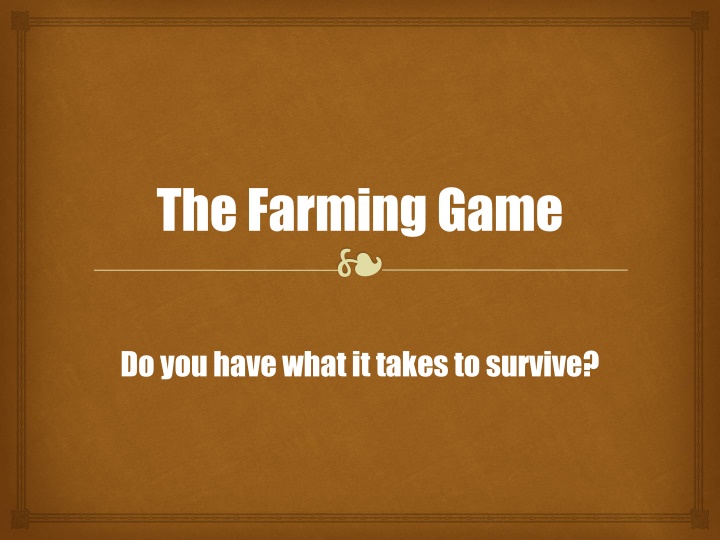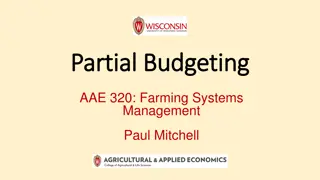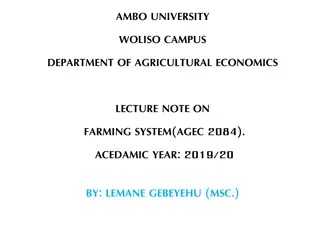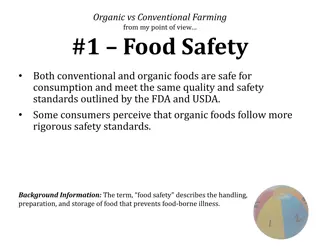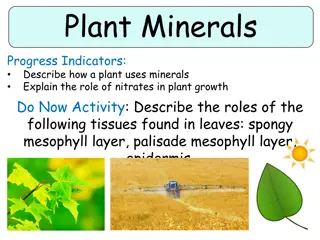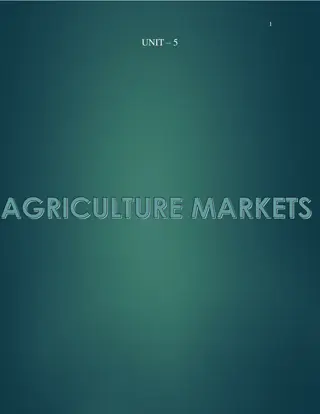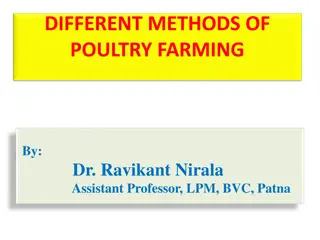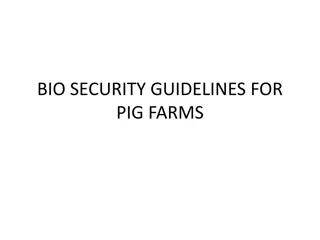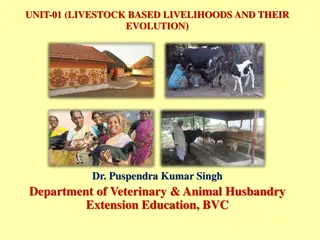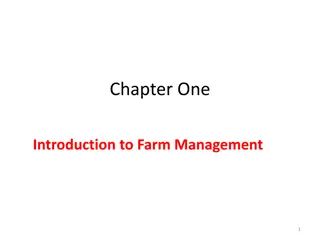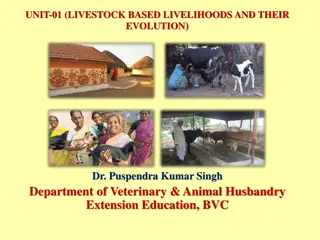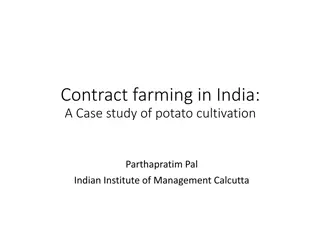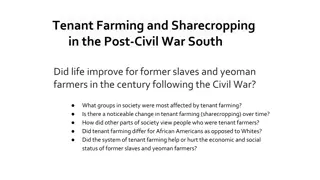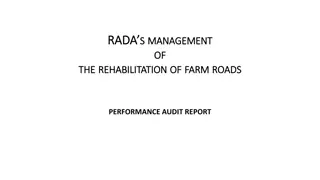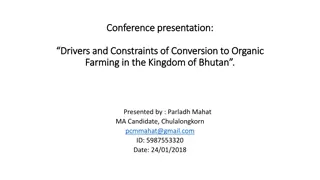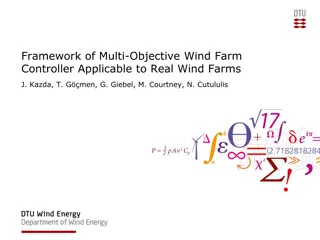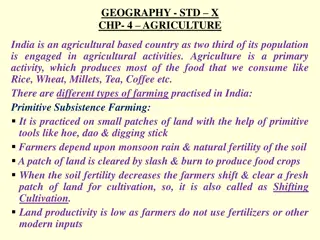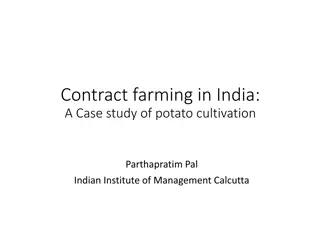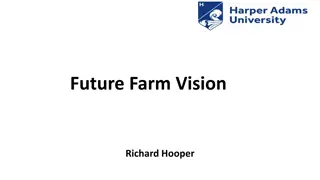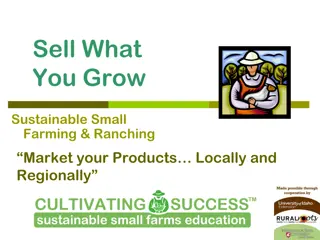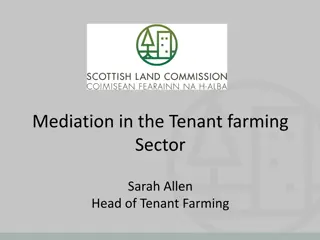The Farming Game - Challenges and Decisions in Farm Management
Explore the challenges faced by farmers in Nebraska from 1885 to 1887, dealing with weather phenomena like droughts, severe winter, and locust infestations. Analyze crop investments, yield variations, and market trends affecting cattle, sheep, and hogs. Reflect on the impact of different decisions made each year on overall success in managing a 160-acre farm in Central Nebraska.
Download Presentation

Please find below an Image/Link to download the presentation.
The content on the website is provided AS IS for your information and personal use only. It may not be sold, licensed, or shared on other websites without obtaining consent from the author.If you encounter any issues during the download, it is possible that the publisher has removed the file from their server.
You are allowed to download the files provided on this website for personal or commercial use, subject to the condition that they are used lawfully. All files are the property of their respective owners.
The content on the website is provided AS IS for your information and personal use only. It may not be sold, licensed, or shared on other websites without obtaining consent from the author.
E N D
Presentation Transcript
The Farming Game Do you have what it takes to survive?
Yield in 1885 A serious lack of early spring rain in July almost destroyed the wheat, barley, and oat crop in Nebraska. The prices for corn, beans, field peas, and tobacco are up because of drought east of the Mississippi Cattle prices are down because of large herds of range stock being sold in Texas The price for sheep is up, and hogs are at an all-time high
1885 Investment Return Crop Investment Return 2 3 1 1 1 2 2 2 1 2 3 Corn Beans Wheat Barley Oats Field Hay Tobacco Field Peas Cattle Sheep Hogs
Yield in 1886 The coldest winter in history (temperatures at -60 F) destroyed most of the cattle and hogs Sheep prices are high Abundant spring and summer rain throughout the state has produced excellent crops for corn, wheat, barley, and oats Bean crop has produced a small yield because of the late frost Field hay prices are depressed because of limited demand
1886 Investment Return Crop Investment Return 2 1 2 2 2 1 2 2 0 3 0 Corn Beans Wheat Barley Oats Field Hay Tobacco Field Peas Cattle Sheep Hogs
Yield in 1887 Nature deals a crushing blow to farmers in Nebraska. After a hot dry spring with little rain, a plague of grasshoppers or locusts arrives. They infest the crops, and most are badly damaged Cattle prices are very good, as the range herds haven t yet recovered from the killing winter of 86
1887 Investment Return Crop Investment Return 1 1.5 2 1.5 1 2 1 1 3 1 2 Corn Beans Wheat Barley Oats Field Hay Tobacco Field Peas Cattle Sheep Hogs
The Results How did you do, from year to year and overall? What were some good decisions that you made? What were some bad ones? How much agency did you have in determining your success, and why?
Writing Response For writing: How did you feel about your experience in the Farming Game? How might real farmers, whose future was dependent on the outcome, have felt? What might be the reaction of real farmers to their frustrations?
